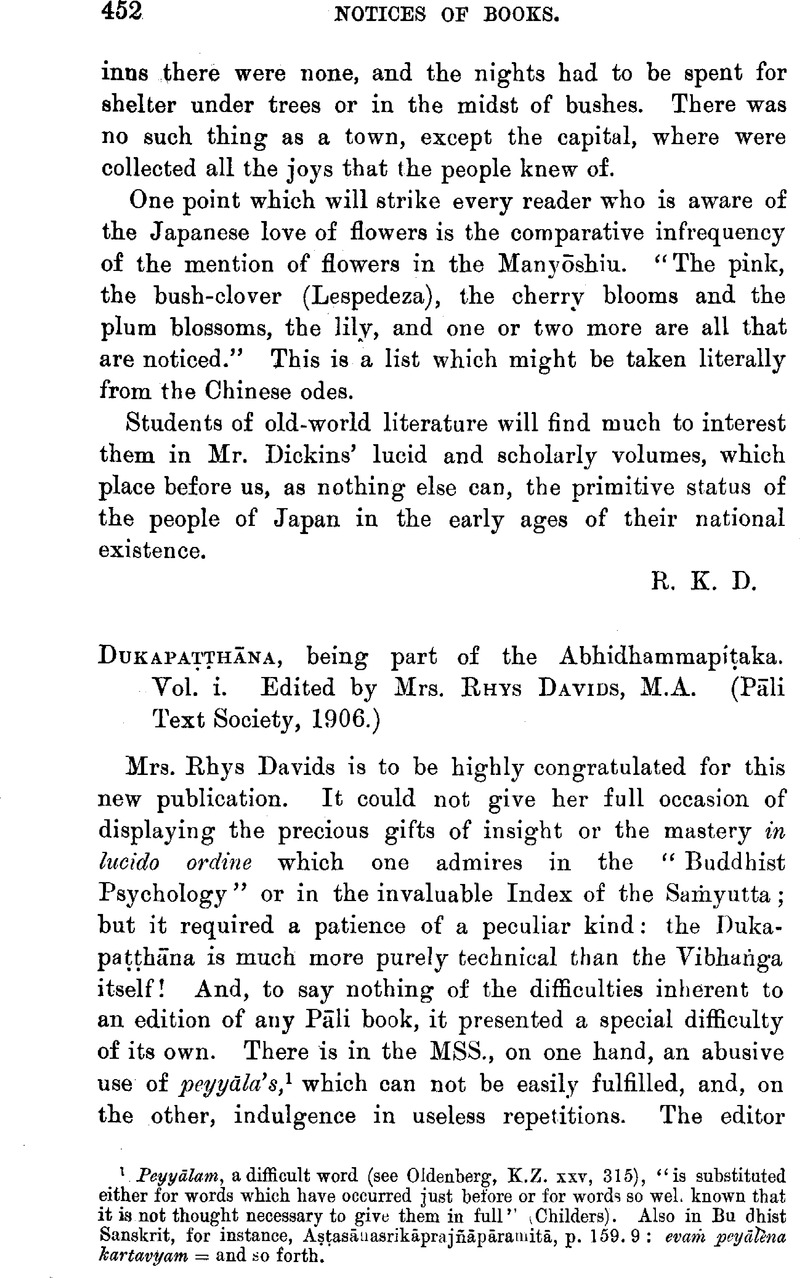No CrossRef data available.
Article contents
Dukapaṭṭhāna, being part of the Abhidhammapiṭaka. Vol. i. Edited by MrsRhys Davids, M.A. (Pāli Text Society, 1906.)
Published online by Cambridge University Press: 15 March 2011
Abstract

- Type
- Notices of Books
- Information
- Copyright
- Copyright © The Royal Asiatic Society 1907
References
page 452 note 1 Peyyālam, a difficult word (see Oldenberg, , K.Z. xxv, 315),Google Scholar “is substituted either for words which have occurred just before or for words so well known that it is not thought necessary to give them in full” (Childers). Also in Bu dhist Sanskrit, for instance, Aṣṭasāuasrikāprajñāpāramitā, p. 159.9: evaṁ peyālena kartavyam = and so forth.
page 453 note 1 See Puggalapaññati, , Intr., p. ix.Google Scholar—From Majjhima, , ii, 238 f., it follows that the Abhidhamma, ‘bye-law’ or ‘subtleties in dharma’ (as says Professor Rhys Davids), is no part of the Dhamma-Vinaya. The whole of the Law is the satipaṭṭhānādi, the thirty-seven limbs of bodhi.Google Scholar
page 454 note 1 Some of them only are admitted in the Northern treatises, see Madhyamakavṛtti, , p. 76, n. 7, and p. 77,Google Scholar 1. 5 (four only).—Also Bhavya apud Rockhill, p. 196: the Sarvāstivādins admit only of seven pratyayas—hetu, ālambana, anantara, adhipati, karman, āhāra, and niśraya ![]()
page 455 note 1 Atthasālinī, , p. 13, § 40.Google Scholar




